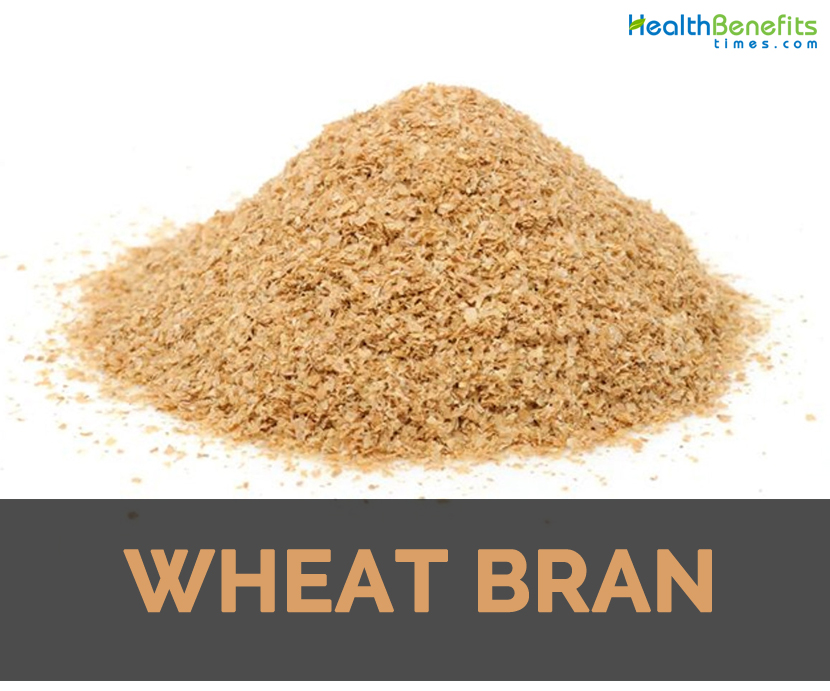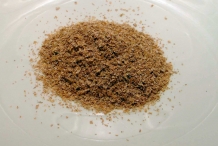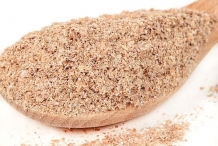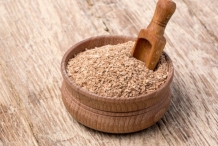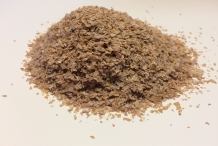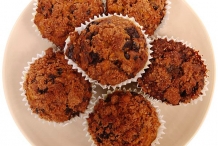| Wheat bran Quick Facts |
| Name: |
Wheat bran |
| Taste |
Sweet |
| Calories |
125 Kcal./cup |
| Major nutrients |
Manganese (290.00%)
Magnesium (84.29%)
Phosphorus (84.00%)
Selenium (81.82%)
Iron (76.63%)
|
| Health benefits |
Manage weight, Gastrointestinal health, Maintain healthy blood pressure, Prevention of colon cancer, Indigestion |
Wheat kernel is composed of three parts: bran, endosperm and germ. Wheat bran is an outside layer of kern which is hard and is separated from other parts of kernel by milling. This plant component is indigestible that contains 45% of dietary fiber in which more than 90% is insoluble fiber. There are two types of fiber: one is soluble fiber and other is insoluble fiber. This dietary fiber is related to effectively maintain bowel regularity. It is healthy for maintaining digestive health and also prevents constipation. Similar to oat bran, it is also once used as a feed for livestock. Moreover, wheat bran also reduces the level of cholesterol, normalize blood sugar, strengthen immune system and assist to lose and maintain weight. It is an excellent source of dietary fiber that reduces the chances of various diseases and promotes overall health.
Health Benefits of Wheat Bran
Wheat bran has beneficial effects on digestive and cardiovascular health. Being a great source of dietary fiber, it supports digestion and adds bulk to the stool that automatically provides relief from hemorrhoids, constipation, stool leakage and other gastrointestinal problems. The consumption of wheat bran enhances satiety and prevents hunger pangs.
- Manage weight
Wheat bran is an excellent source of dietary fiber that has vital role in maintaining body weight by lowering hunger pangs. It keeps stomach full, satisfied and regulates appetite. It enhance intake of less food and supports healthy eating and managing weight.
- Gastrointestinal health
Addition of wheat bran to the regular diet prevents one from constipation. It also keeps the things moving. It promotes overall digestive health by lowering hemorrhoids, constipation, leakage of stool and other problems as well.
- Maintain healthy blood pressure
High blood pressure is responsible for causing excess strain and damage to arteries. Wheat bran intake assists in lowering blood pressure. It is related to lowering the chances of cardiovascular problems and also slows down the chances of cardiovascular problems. Add wheat bran to the diet for promoting the level of blood cholesterol and lowering the chances of stroke, heart disease, diabetes and obesity.
- Prevention of colon cancer
Studies revealed that diet which contains wheat bran is effective to combat the development of colon cancer. It assists to form bulky stools that abduct carcinogens rapidly and limit the exposure of colon cells to carcinogens. Wheat bran ferment in colon by producing short-chain fatty acids that fed healthy bacteria in gut. It lowers the chances of cancer growth and development. It is a great source of antioxidants and chemicals that counteract free radicals and prevent serious health conditions such as cancer.
- Indigestion
Wheat bran has some enzymes that activate digestion by assisting in food transfer. Take half teaspoon of bran powder before and after meals to eliminate indigestion, colitis and bloating.
https://www.youtube.com/watch?v=FMxbnULCSYI
Traditional uses
- It is helpful for people with diverticulitis.
- Apply the water compress with bran on irritated skin twice regularly in the morning and evening for minimum 10 minutes.
- Apply the bran paste wrapped in gauze on psoriasis wounds.
Precautions
- Excess consumption might lead to intestinal problems such as diarrhea, rots, flatulence, bloating and bowel obstruction.
- One should consume lots of water after consuming wheat bran.
- Avoid wheat bran by people with Crohn’s disease or ulcerative colitis.
- When used for the first time, it causes stomach discomfort, gas or flatulence.
- Wheat bran is likely to be safe to use during breast feeding and pregnancy.
How to Eat
- Wheat bran could be added to baked goods such as cookies, muffins and breads or sprinkle it on smoothies or yogurt.
- Cook it with water or milk for making hot cereal.
- It is necessary in cereal mixes, multi-grain breakfast foods and energy bars.
- In Japan, wheat bran is used for pickling.
- Wheat bran is also used to make muffins and pancakes.
References:
https://foodwatch.com.au/articles/carbs-sugars-and-fibres/item/q-which-bran-is-best-wheat-bran-or-oat-bran.html
https://www.emedicinehealth.com/wheat_bran/vitamins-supplements.htm
https://www.bobsredmill.com/wheat-bran.html
https://www.feedipedia.org/node/726
http://superfoods.news/2017-08-29-wheat-bran-sources-health-benefits-nutrients-uses-and-constituents-at-naturalpedia-com.html
https://www.botanical-online.com/english/wheatbran.htm
https://www.rxlist.com/wheat_bran/supplements.htm
https://www.tarladalal.com/glossary-wheat-bran-430i
https://www.curejoy.com/content/benefits-wheat-bran-good/
http://www.brighthealing.com/wheat-bran-health-from-grains/
Comments
comments


